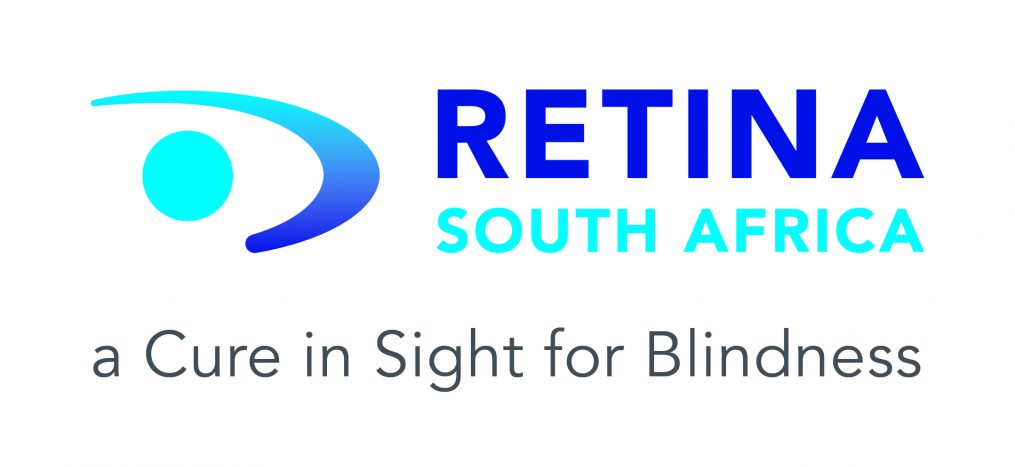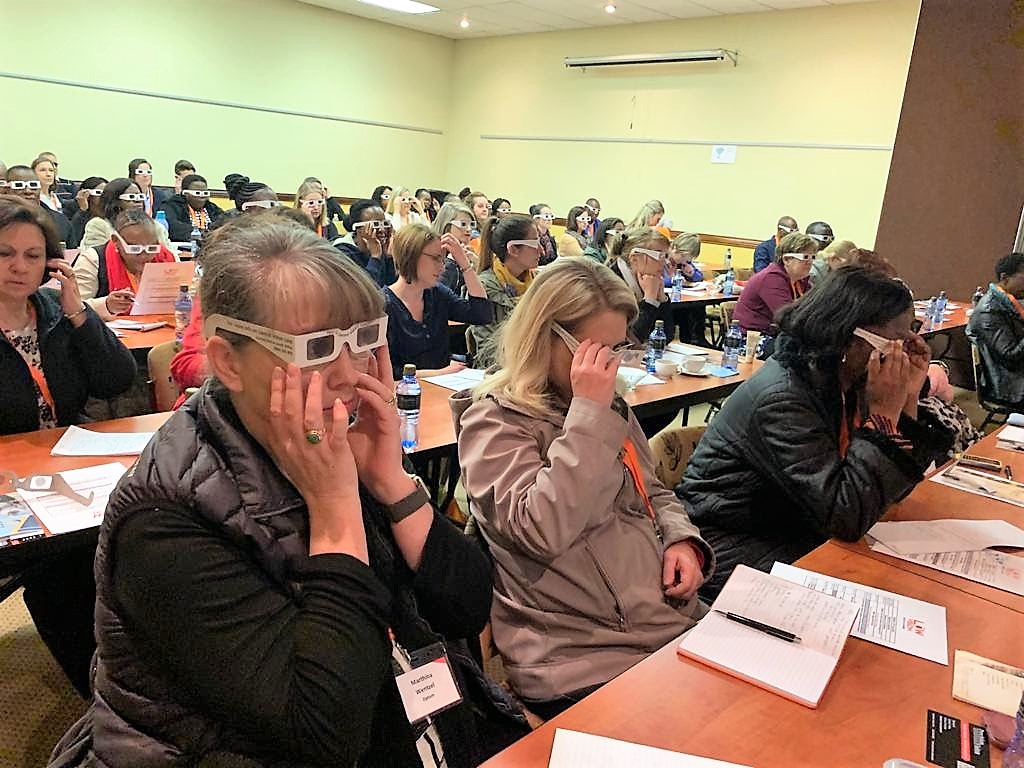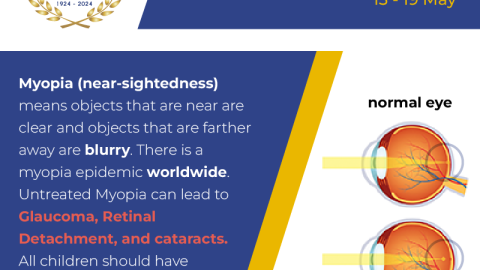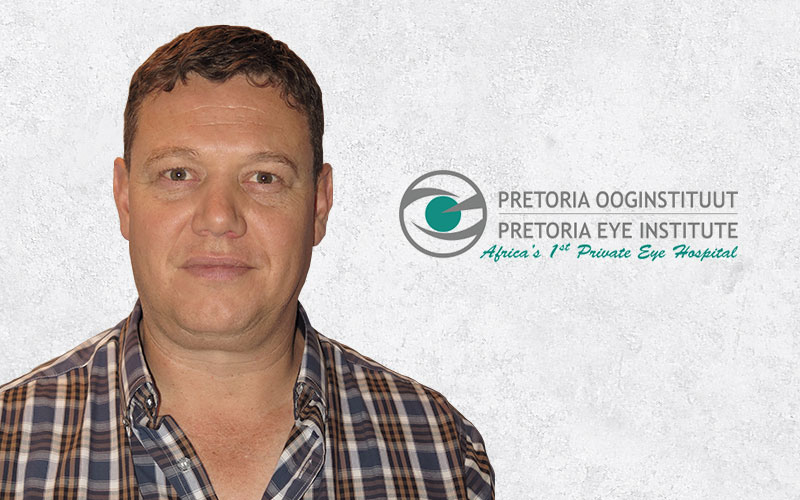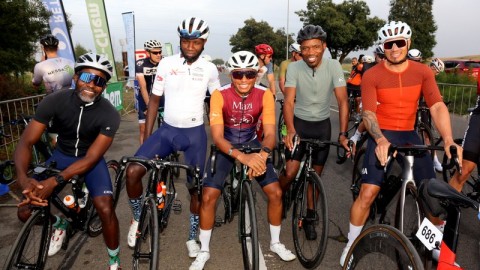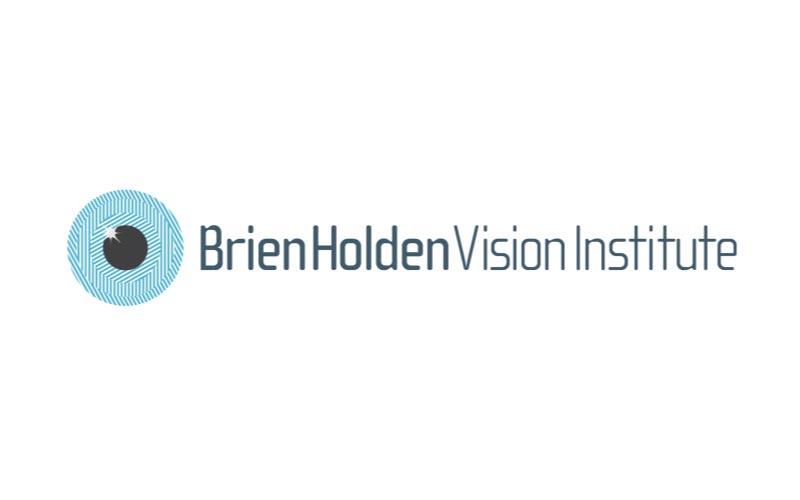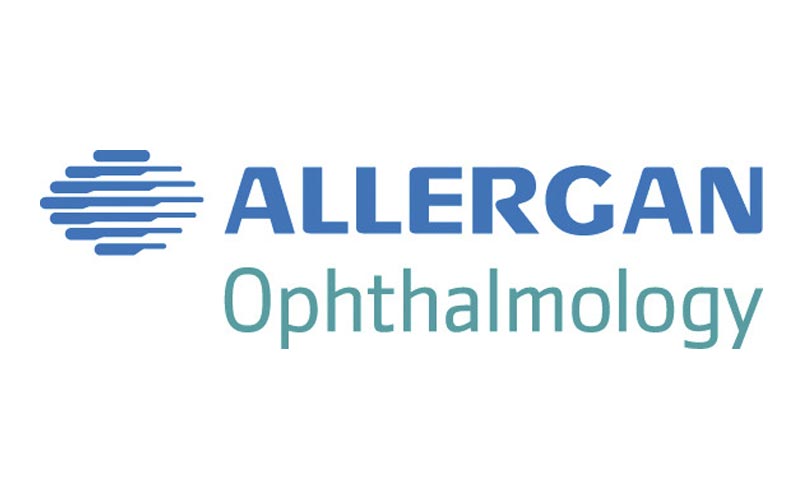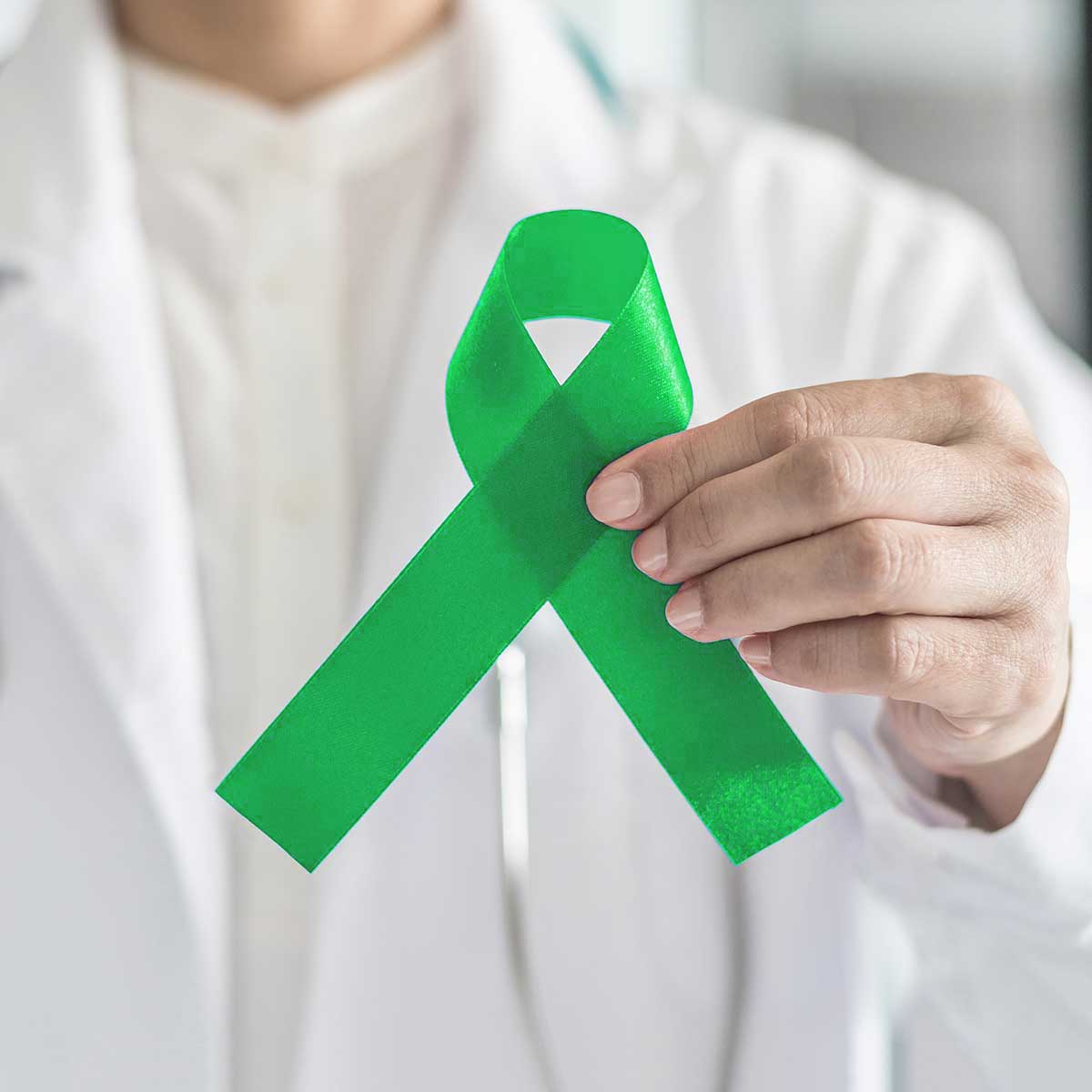DIS-CHEM RIDE FOR SIGHT 2019
The Dis-Chem Ride for Sight was held on 17th February 2019 at the Boksburg City Stadium. The naming sponsor is Dis-Chem Pharmacies and the event is proudly hosted by the City of Ekurhuleni. Almost 5000 cyclists participated in this popular road cycling event.
The winners of the 116km Classic were: Mens- Marc Pritzen and Ladies- Michelle Benson. The race is organised by Retina South Africa, Dis-Chem Pharmacies, Ekurhuleni Metro and community groups such as Springs Wheelers, Hamnet Emergency Communications, Benoni Red Cross and BestMed Road Rangers. Over 400 volunteers assist at the event and we thank them and all our sponsors for their support. Over the last 31 years the event has raised over 10 million rand towards finding treatments for inherited retinal blindness.
Stan Goetsch, director of Dis-Chem Pharmacies said “this is one of the top road races in Gauteng and is fantastically organised. It is a great cause and Dis-Chem are proud to be involved and to support Retina South Africa with their dream of restoring sight to the blind”.
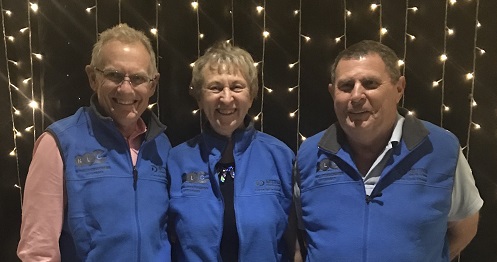
Stan Goetsch left, with Claudette Medefindt and James Cape -Retina SA, at the Dis-Chem Ride for Sight awards.
AMD AMBASSADOR AT RETINA SA
Karen Denton has joined Retina South Africa as our AMD Ambassador. She will be visiting retirement villages to give educational talks about AMD and other forms of vision loss in the ageing population.
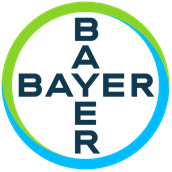 Karen brings with her a wealth of expertise and experience in patient counselling and education. The pilot project is being sponsored by Bayer Pharmaceuticals and will run for 12 months in the Gauteng area. Anyone in the central Gauteng area who would like to organize a group meeting or schedule private counseling with Karen should call the Retina South Africa national office. Thank you, Bayer, for funding this great project.
Karen brings with her a wealth of expertise and experience in patient counselling and education. The pilot project is being sponsored by Bayer Pharmaceuticals and will run for 12 months in the Gauteng area. Anyone in the central Gauteng area who would like to organize a group meeting or schedule private counseling with Karen should call the Retina South Africa national office. Thank you, Bayer, for funding this great project.
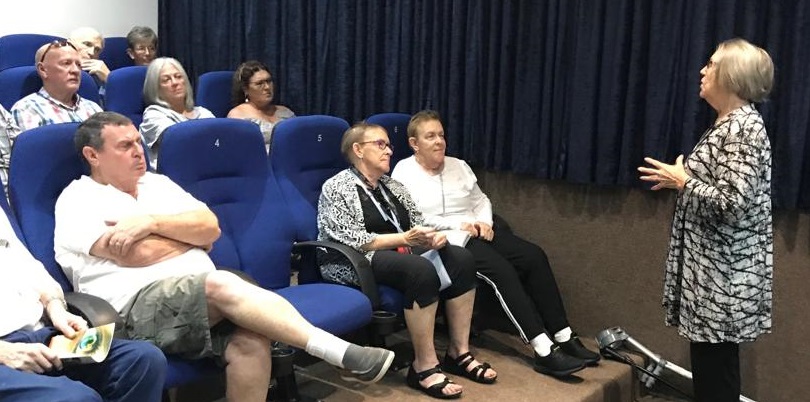
OSSA CONGRESS CAPE TOWN
The annual congress of the South African Ophthalmology Society was held in Cape Town from 21 to 24 March. Dr Linda Visser, past chair of our Scientific and Medical Advisory Board was elected as the new president of OSSA. Dr Visser is the head of Ophthalmology at KwaZulu-Natal University, a stalwart supporter of Retina South Africa and the first female President of OSSA. Congratulations to a worthy recipient.
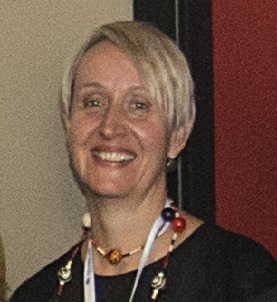
Dr Linda Visser
Professor Raj Ramesar, Professor of Human Genetics at the University of Cape Town gave a presentation to the main congress titled- Inherited retinal diseases: gene-based therapies and the Ophthalmologist’s role. This sparked tremendous interest and many Ophthalmologists visited our awareness table for more information about our IRD Project at UCT. Prof Ramesar is pictured at the congress with national secretary Claudette Medefindt who gave 3 presentation to the satellite programs. Her talks focused on the Screen for Vision – Screen for Life project to inform the Optometrists, Optometric nurses and Ophthalmic assistants of the early warnings’ signs, risks and prevention of Diabetic Retinopathy in Diabetic patients.
The annual meeting of the Scientific and Medical Advisory Board to Retina South Africa was held at the congress. Prof Ramesar [ co-chair of the SMAB] gave an update on the research projects at UCT and Dr Liezel van der Merwe [2nd co-chair] gave an update on the upcoming Stargardts Clinical trial.
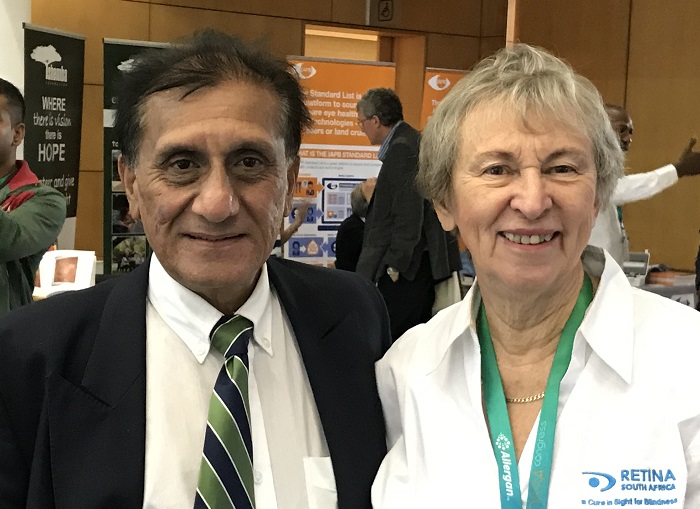
Professor Raj Ramesar & Claudette Medefindt
UNDERSTANDING RETINAL SCIENCE
GENE BASED THERAPIES
Our own “book of life” is written into our genetic code in a molecule called DNA. These instructions, which our body needs to function properly, are packaged in “volumes” called chromosomes and we inherit 1 volume from each parent. Mistakes in the code are called mutations and researchers are looking at various ways of correcting these mistakes.
One way is to insert a correct copy of the code delivered by an inactive virus called gene replacement therapy. The first ever gene replacement therapy to treat the RPE65 form of Leber Congenital Amaurosis has now been registered. See also Gene therapy for AMD below.
A new line of research is CRISPCAS9 Gene Editing [see article below] which is based on the natural phenomenon developed by bacteria to disable viruses. CRISPCAS9 penetrates the nucleus of the cell and removes the incorrect section of the DNA. Both gene replacement and gene editing will usually require only one treatment.
Another new approach is gene silencing which targets the messenger RNA that retrieves the small required section of DNA from the nucleus and delivers it to the appropriate cell – like the retina. Gene silencing will need repeated drug delivered treatments. Successful gene silencing has just been reported on the BBC for Porphyria. Earlier reports showed the success in a severe and fatal genetic neurodegenerative disease called Huntington’s Disease.
RESEARCH NEWS
AGE RELATED MACULAR DEGENERATION [AMD]
- A recent study shows that taking a rest or short nap in the afternoon may be a good thing. It may offer some prevention for developing AMD. [ Editor’s note: Provided you have had your 30 minutes moderate daily exercise!]
- The world’s first gene therapy for AMD was carried out at the John Radcliffe Hospital by Professor Robert MacLaren from the University of Oxford in February. The gene therapy is designed to deactivate the complement system, part of the immune system – thought to be awry in AMD. The aim of the therapy is to halt the progress of the condition and preserve what vision patients have remaining. If successful, it is hoped that gene therapy can be used in the future on patients with early AMD and so halt the disease before their vision has started to deteriorate.
- A recent study from Portugal suggests that physical activity and a Mediterranean style diet have a protective role in AMD. Other protective factors were fruit and micronutrients such as caffeine, dietary fibre, beta-carotene, vitamin C and vitamin E. [ Editor’s note- Most studies advise moderate use of caffeine]
- A Chinese meta- analysis study [combining results of many studies] confirmed that that some variations in the in the Complement genes C2, CFB and CFH have a protective role in AMD but variants in C3 gene posed a high-risk factor for AMD. This effect was also stronger in Caucasians than Asians.
- A study conducted in the USA and UK concluded that supplementation of the AREDS supplements in certain categories of AMD is more effective than no supplement use and should therefore be considered in public health policy.
- Researchers are studying the wide range of properties of Curcumin [Turmeric] such as antioxidant, anti-inflammatory and antiangiogenic in retinal diseases. In another study in Australia researchers found that supplementation with Saffron, known for its antioxidant properties, modestly improved visual function in participants with AMD, including those using AREDS supplements. [Editor’s note: So adding more Turmeric and Saffron to your diet might be a tasty good idea.]
GENE THERAPY
- ProQR has announced that the 1st patients have been dosed in the Phase 1/2 STELLAR clinical trial for Usher Syndrome Type 2. The compound under investigation is QR-421, a RNA therapy that targets mutations in exon 13 of the USH2A gene
CRISPCAS9
- Clinical research for gene editing technology are aiming to start a Phase I/II interventional trial to treat Leber Congenital Amaurosis type 10 (LCA10). The trial aims to enroll between 10 and 20 adult and pediatric patients with LCA10 in an open label, dose-escalation study. The trial will evaluate both efficacy and safety, and will measure vision loss in the LCA10 patients. LCA10 is the most common form of LCA in Europe and North America. Research into this form of gene editing has shown how relatively easy the CRISPR system could be used as an RNA-guided platform for specific control of gene expression
NEW PROGRESS IN OPTOBIONICS
The attempt to confer light sensing properties onto the neural retina cells – Ganglion and Bipolar cells has been the focus of many researchers. Professor John Flannery, UC, Berkeley has pioneered a new direction for this promising field of therapy. Using an AAV Virus engineered to target ganglion cells, they have delivered a gene for green opsin, and made the normally blind ganglion cells sensitive to light. This was delivered to the eyes of blind mice and, a month later they were navigating around obstacles as easily as mice with no vision problems. They were able to see motion, brightness changes and fine detail on an iPad sufficient to distinguish letters. The researchers say that, within as little as three years, the gene therapy—delivered via an inactivated virus—could be tried in humans who’ve lost sight due to retinal degeneration, ideally giving them enough vision to move around and potentially restoring their ability to read or watch videos.
CONE CELL DEATH IN RETINITIS PIGMENTOSA [RP]
The underlying gene mutations in RP [over 70 identified] usually results in Rod photoreceptor cell death. At some critical point the lack of surviving Rods leads to death of the cone photoreceptors. The death of rods reduces oxygen consumption resulting in high levels of oxygen in the outer retina. This stimulates the production of superoxide radicals and eventually progressive oxidative damage in cones and cone cell death. Professor Campochiaro of John Hopkins University has shown that oxidative damage and the antioxidant Glutathione, a major component of the of the antioxidant defense system, is involved in this process. Professor Campochiaro suggests clinical trials to identify therapeutic agents and dosages to reverse clinical biomarkers of disease. [Editors note: RP patients should discuss anti- oxidant supplementation – such as Retina Plus which has a high level of L- Glutathione content, with their Eye specialist.]
MORE INFORMATION
For more information on various forms of retinal degeneration see our website www.retinasa.org.za or the excellent toolkits on the Retina International Website www.retina-international.org
HELP YOURSELF
- Using apps on your smart phone has the potential to increase independence and as such improve well-being, crucial when you may be struggling with little or no vision. They will require a level of ability with technology to get you up and running. If you don’t currently feel confident with technology then please don’t let that put you off. On our website we have provided you with a list of suggested apps that will make a difference to your daily living. Most of these apps are free to download from you smartphone app store. See retinasa.org.sa
Menu: Assistance, section Technology
- FREE SCREEN READER
Non visual Desktop Access – NVDA .
The NVDA is a free “screen reader” for Windows, which enables blind and vision impaired people to use computers. It reads the text on the screen in a computerised voice. You can control what is read to you by moving the cursor to the relevant area of text with a mouse or the arrows on your keyboard.
NVDA can also convert the text into braille if the computer user owns a device called a “braille display”.
Download NVDA from https://www.nvaccess.org/download/
Thanks to Anton van Rooyen from Sight Seekers for this information.
[Editor’s note: this free reader does not have all the capabilities of the expensive programs such as Zoom text or Jaws but is very user friendly and apparently very good for coding]
LIFESTYLE CHOICES
- The importance of a healthy eating pattern and moderate exercise is now generally accepted but very few people practice this simple way of increasing health and protecting your vision. The horrific increase in Diabetes type 2 means that millions of South Africans are at risk and having a genetic retinal disease will not protect you from developing this added burden. Are you at risk? Are you overweight, does your waist measurement exceed your hip measurement, do you have a high glucose blood level, high blood pressure or high Cholesterol?
Have a fundus photograph at your Eye Specialist or from an Optometrist offering this service to find out if you are at risk.
See www.screenforlife.co.za for a service provider near you.
Tiny Dot hemorrhages on the retina will alert you to your high risk of Heart Disease, Kidney Disease, Diabetic Retinopathy or amputation.
WHAT TO DO
- Get regular eye and health checks of blood pressure, BMI and cholesterol.
- Control your diet: No more than 25% of your daily food intake should be lean proteins, plant based or lean meat such as Chicken, Ostrich or fish, preferably those high in Omega 3. 25% Should be carbohydrates but no simple carbohydrates with sugar topping his list. No more than 10% should be unsaturated fats. 50% should be colorful vegetables – green, yellow, red, orange and purple- and preferably fresh.
- Add plenty of green herbs to your diet.
- Avoid any foodstuffs with artificial additives and check food labels for hidden sugar.
- Drink plenty of water and avoid fizzy drinks with high sugar or artificial sweeteners.
EXERCISE AND SLEEP
- 30 Minutes moderate exercise daily will reduce blood sugar and blood lipids by around 40%. Even 6 sessions of 5 minutes per day will achieve this amazing effect. Moderate exercises include walking, swimming, yoga and simple movements such as chair to standing, walking on the spot, knees to chest and simple lunges will suffice. For vigorous exercise such as running or cycling 150 minutes per week is sufficient.
- Get enough sleep – at least 7 hours per night. Sleep deprivation leads to- stress, slowed reaction times, poor judgement and reduced glucose metabolism. It can also effect the brain’s ability to metabolise waste products, the brain’s reward system leading to over-eating and the immune system.
MEMBERSHIP FEES AND RESEARCH FUNDING
Family membership fees are now R220 per year. Thank you to all the members who have paid and also contributed to our research projects. We have a shortfall of over R300 000 for the grant needed to maintain the RD project at the University of Cape Town. Without this project NO genetic research or testing for Inherited Retinal disorders will be possible in South Africa. So your donation is vital for this important aspect of our work.
You could also:
- Take tickets for the 2019 Fury Raffle to win a Mazda 2. Contact Linda at 011450 1181 or national@retinasa.org.za to order your book of 10 tickets for just R100. ALL the proceeds from the raffle tickets go directly to our research fund.
- Nominate Retina South Africa as a beneficiary on My School/ My Planet at no cost to you whatsoever. See myschool.co.za and remember to swipe your card.
- Join the Circle of Light for 2019. Simply donate R250 per year to win a monthly draw prize of R500.
- Ask your employer to consider us as a recipient of a CSI donation in 2019. We will follow up with a proposal. Donations exceeding R250 are eligible for a Section 18a tax deduction.
Banking details: Retina South Africa, Standard Bank, Bedfordview branch, Code 018305, Account number 020312164. Please send us a copy of the eft.
THANK YOU BAUSCH AND LOMB FOR YOUR CONTINUED SUPPORT OF OUR WORK.

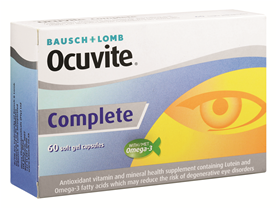
Ophthalmologists’ No.1 prescribed eye health supplement 1
Reference: 1. Impact Rx. Scripted data – December 2017. Proprietary name and dosage from: Ocuvite Complete soft gel capsules. Composition: Each soft gel capsule contains fish oil rich in DHA 507,7 mg: of which DHA 180 mg and total omega-3 300 mg, lutein 5 mg, zeaxanthin 1 mg, vitamin C 90mg, vitamin E 15 mg, zinc 7,5 mg.
Bausch & Lomb Incorporated. ®/™ denote trademarks of Bausch & Lomb Incorporated. Applicant: Soflens (Pty) Ltd. Reg. No.: 1968/011787/07. 254 Hall Street, Centurion. Tel: +27 10 900 1356. www.bausch.co.za.

